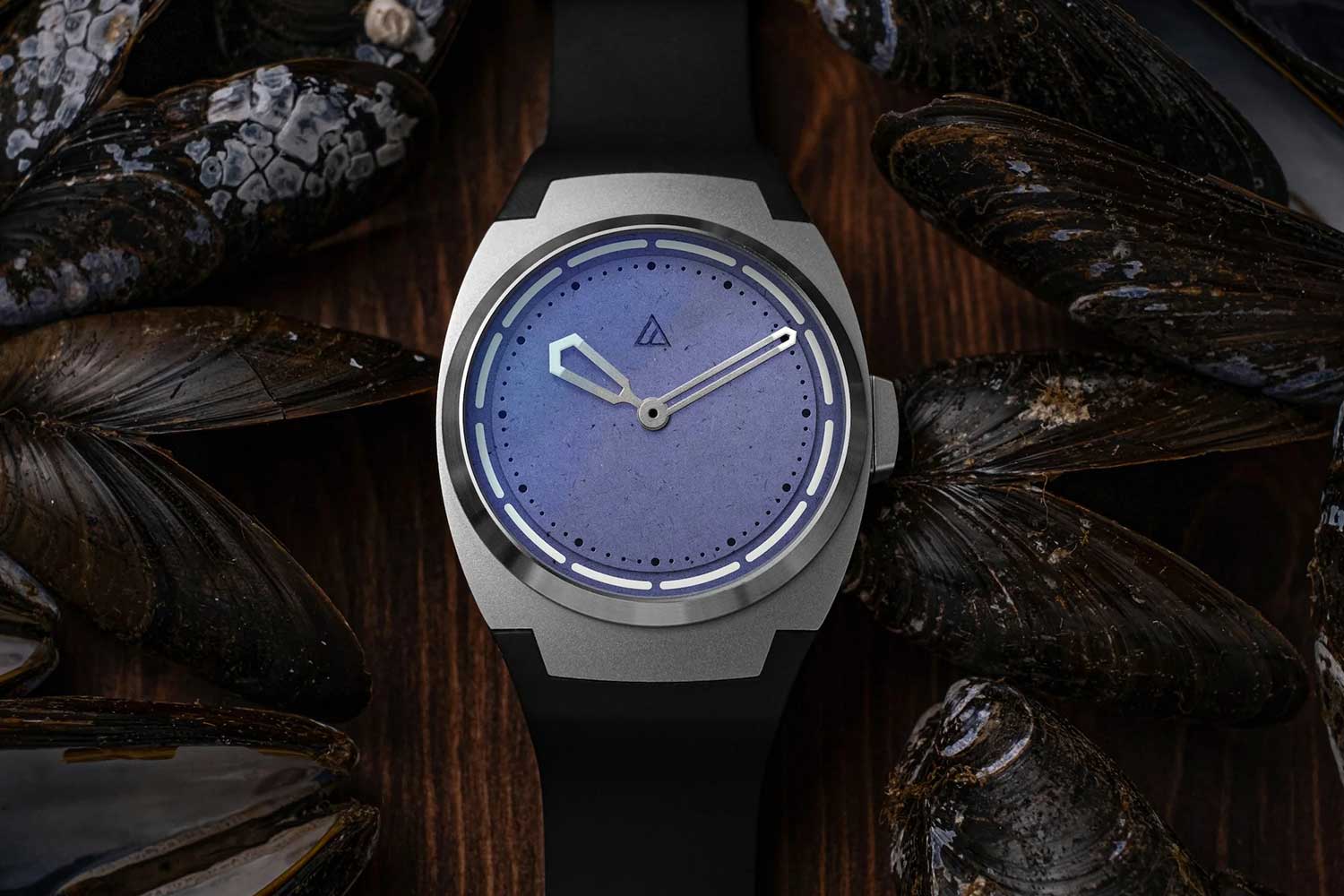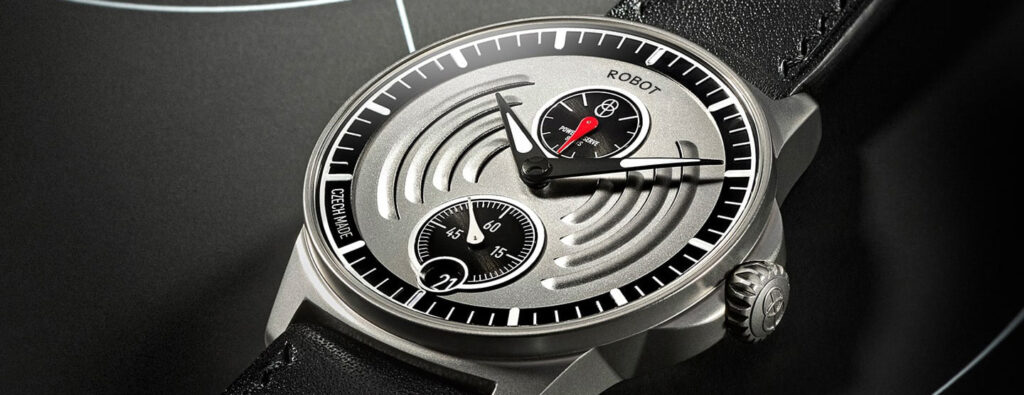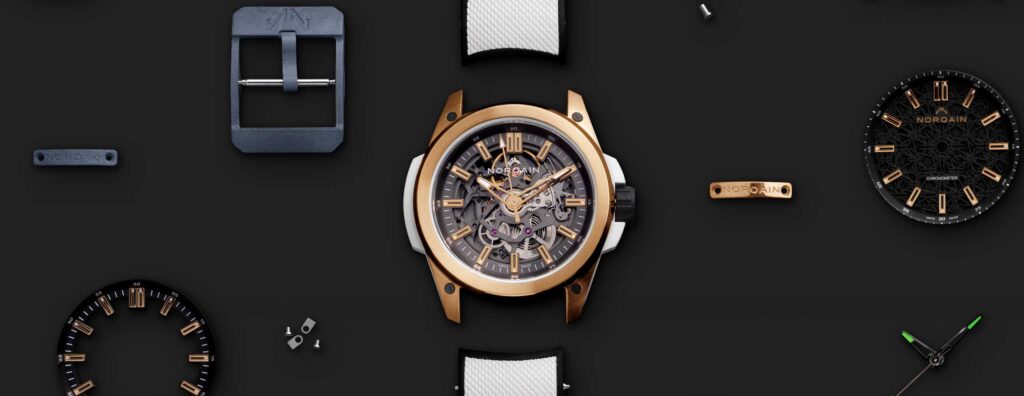Danish watchmaker Arcanaut returns with its second and third releases of 2023, extending its composites range in new and unexpected directions.
When I first started working for Arcanaut, it would be fair to say I didn’t know what I was getting myself into. I’d discovered the brand while working primarily as a journalist and was fascinated by the ascetic Scandinavian case design, the commitment to domestic manufacturing where possible, and the seemingly boundless energy of both co-founder and Chief Designer Anders Brandt, and co-owner and Chief of Materials Development, James “Black Badger” Thompson for pushing watchmaking in directions no one asked them to, because no one was really sure the direction they were pushing was somewhere watchmaking was even able to go.
But that was the beauty of it. There was something there I hadn’t seen in a long time. There was no cynicism, no behind-the-scenes strategizing, no calculated commercially minded collection rushed out to capitalize on a trend or fad. Instead, there was a wonderful naivety to proceedings. It was something special. Something that needed protecting from the cutthroat, dog-eat-dog, conglomerate-controlled industry. And when the guys asked me to come on board, I knew that would be at least part of my role.

Arcanaut Havender
An introduction to the team
Full disclosure if it isn’t apparent already: I still work with Arcanaut as the company’s Head of Brand Development. Although technically a self-employed watchmaking consultant, Arcanaut is (and has been for over a year) my primary client. My roles with other brands (that encompass product development, retail strategy, and communications) keep me abreast of what’s happening in the world outside the closed doors of the Badger Den and afford me the welcome responsibility of drip-feeding the essential takeaways to the team. Too much information could be damaging. Too much knowledge, jading. What Anders and James do better than I’ve seen almost any duo accomplish, is create from starting points that are so far off the edge of the known map, that they might as well be in Space.
As a seasoned industry veteran (or crusty old hack, if you prefer), my job in these product development meetings is often to observe and do my level best to keep my mouth shut until the time comes for a wild and wacky idea to receive its final coat of gloss that might make it in some way communicable to the wider world. The very best example of this came with the creation of the Havender composite that is being released alongside its clean-dialed range-mate, the Klint.

Arcanaut Havender

Arcanaut Klint
We enjoyed a very positive response to the
D’Arc Matter Colours Collection and were chewing over possibilities for our next composite. Sales of the unique Fordite pieces were rolling in steadily so we had a bit of breathing room to get creative. We talked about all the different types of stones available to us and speculated on the colors we might be able to achieve by crushing them and reconstituting them into millable blocks as we had done with Swedish Slate to create the D’Arc Matter material for which the brand is probably best known.
We mulled over limestone, sandstone, semi-precious stones, and more, before someone raised the possibility of shells. Thankfully, Gothenburg where James Thompson and the Badger Den are based is right on the coast, and so access to seashells was not a huge problem. We quickly located a nearby mussel farm and gave them a call.
Of course, when we began our journey to collect the ten kilos of empty blue mussel shells offered to us, we’d hoped to derive a blue-colored composite from them. We’d also hoped it would be easy. Neither of which turned out to be the case.
Recently, we recorded a video of James explaining the entire process of creating the Havender composite. It’s an illuminating watch and handily condenses weeks of painstaking research into the material we’d decided to use before realizing how much of a headache using it would cause.
Firstly, mussel shells do not come out of the sea ready to be turned into luxury watch dials. In fact, when we first got our hands on them, they couldn’t have looked further from the refined, uniform material into which they were ultimately transformed. A lot of preparation needed to be done. And a lot of those steps were only discovered after a lengthy trial-and-error process.

Arcanaut Klint
When alive, blue mussel shells are covered with a black membrane called the periostracum membrane. By the time they reach us, the membrane has hardened to a brown, rock-like substance that must be removed before the shell can be cleaned and the pigment harvesting begins.
Once this outer layer has been chipped/filed/exorcized away, the shell can be cleaned in a special solution and then dried to bring out its true color. Following that, the pigment can be ground away using a hand-held Dremel sander to remove the powder and a small, desk-top vacuum to suck it up before it escapes into the air around us.
Only one part of the mussel shell contains sufficient and usable pigment. The base, or “knuckle” of the shell is bone-like and breaks away in jagged chunks that do not want to become a powder of uniform particle size. This area of the shell is therefore ignored. The tip of the shell is wafer-thin and shatters more like glass, which results in fine, fibrous shards that would distract the eye when mixed together in a composite. The middle “Goldilocks” layer, however, is just right. From here a fine, uniform powder can be obtained. It is a time-consuming process, with each dial requiring several kilos of shells and hours of grinding to yield enough powder, but it is rewarding.

Arcanaut Havender
Meanwhile, the Klint is a far simpler process. The real work here went into finding a pulverizable material that would remain white enough when mixed with the necessary binding agent to create the millable block we need to create the dials. It took weeks. We tried everything white or whitish that we could lay our hands on. Nothing worked. Everything came out murky, brown, or, at best, creamy. And then we stumbled across the root of all paint — titanium dioxide.
This fine white powder (while not something you want in your suitcase while crossing borders) was a godsend. Not only is it extremely fine, but it also retains its piercing white daytime hue when mixed with our UV-resistant, ultra-clear resin. Like all of our composites, it has a texture and a depth of color that can only be achieved by milling dials out of solid materials, rather than painting or surface-treating base metals.

Arcanaut Klint
Both watches come in Arcanaut’s signature 40.52 mm case, which is machined in Copenhagen and is water-resistant to 100 meters. The laser-cut stainless steel hands are also made in Denmark. The dial materials are created in Sweden and then machined in Denmark. Our movements (Soprod A10 automatics) are Swiss-made, and our proprietary straps are made by our trusted manufacturing partners in Hong Kong. Our goal is to bring as much of the manufacturing as we can to Danish shores. Hopefully, the Havender (limited to 33 pieces) and the Klint (limited to 25 pieces in 2023) will be the next step toward that goal.
Arcanaut Arc II — Havender and Klint modelsMovement: Soprod A10
Functions: Hours and minutes
Case: 40.52 mm stainless steel case, machined in Copenhagen, and water resistant to 100 m
Dial: Havender: purple mussel shell-derived composite; Klint: titanium dioxide composite
Strap: Proprietary rubber strap in a choice of eight colors (black, white, red, brown, green, orange, light blue, and dark blue)
Price: USD 3,950 excluding taxes
Availability: Available from November 30th, 7 PM. The Havender is limited to 33 pieces worldwide; the Klint is limited to 25 pieces in 2023.

















